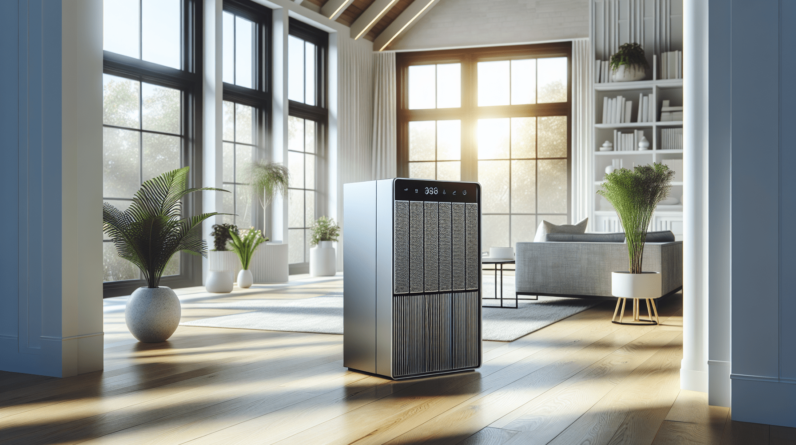

Have you ever found yourself sweating in the heat while wondering how to keep your small space cool without blasting your power bill? You’re not alone! Many people face this dilemma, especially in urban living situations where traditional air conditioning units can be bulky and inefficient. You might be surprised to learn that there are options out there for you that won’t break the bank and can fit into your window with ease.
Understanding Window Air Conditioners
Window air conditioners are designed to cool off single rooms or small spaces without the installation complexities that come with central air systems. They’re typically mounted in a window, and they work by pulling in warm air, removing its heat, and blowing cool air back into the room. This makes them an excellent choice for apartments, student dorms, or any compact living area.
How Small Window Air Conditioners Work
You may be curious about the mechanics behind these little units. A window air conditioner functions through a cycle of evaporation and condensation. Here’s a simplified version:
- Air Intake: Warm air from the room is drawn into the unit.
- Evaporator Coil: The warm air passes over the evaporator coil, where refrigerant absorbs the heat and cools the air.
- Compressor: The refrigerant transitions from a gas to a liquid, compressing and releasing heat outside your window.
- Blower Fan: Cool air is then blown back into your room.
Understanding this process can help you appreciate the efficiency small units bring, especially for smaller spaces.
Benefits of Small Window Air Conditioners
Opting for a smaller air conditioner can bring numerous advantages to your living conditions:
Space Efficiency
With limited room available, you might hesitate to commit to a large air conditioning unit. Small window air conditioners are designed specifically to be compact, taking up minimal space while delivering effective cooling.
Energy Savings
Since smaller units generally have lower energy requirements, running them can lower your electricity bill. This energy efficiency is especially appealing during the hottest months when you’re tempted to crank up the AC.
Easy Installation
Compared to traditional AC systems requiring complex ductwork and installations, window units can typically be installed in just a few simple steps. All you need is a window, and many models come with easy-to-follow instructions.
Portability
If you’re tipsy on your living situation or enjoy rearranging your space, look for smaller window units that are removable and portable. This allows you to reposition your cooling solutions based on changing needs or seasons.

Key Features to Consider
When shopping for the smallest air conditioner for your window, keep an eye out for specific features that may enhance your experience.
Size and BTU (British Thermal Unit)
One of the first numbers you’ll see is the BTU rating, indicating the unit’s cooling capacity. The right BTU for your space depends on factors like the room size and ceiling height. Here’s a simple guide:
| Room Size (Square Feet) | BTU Rating |
|---|---|
| Up to 150 | 5,000 |
| 150 – 250 | 6,000 |
| 250 – 300 | 7,000 |
| 300 – 350 | 8,000 |
By matching your room size to the appropriate BTU, you’ll ensure the unit is powerful enough to cool your space efficiently without overworking itself.
Noise Level
While cool air is essential, so is a peaceful environment. Look for units that have a low noise rating, often listed in decibels (dB). Generally, a rating below 50 dB is considered quiet for an air conditioner.
Energy Efficiency Ratio (EER)
The EER is a measure of how efficiently an air conditioner operates when it’s at full capacity. The higher the EER, the more energy efficient the unit is. Units with an EER of 12 or higher tend to qualify for energy-saving programs, making them a smart choice for both your wallet and the environment.
Air Filters
Filters work to improve indoor air quality by trapping dust and allergens. Look for units with washable and reusable filters. Regular maintenance will keep the air circulating healthy and can prolong the life of the unit.
Popular Small Window Air Conditioner Models
There are numerous models available that fit the criteria for being small yet effective. While the specifics can vary, we’ve compiled a few stand-out options renowned for their efficiency and size.
1. MIDEA MAW05M1BWT
- BTU: 5,000
- Energy Efficiency Ratio: 12.2
- Noise Level: 42 dB
- Key Features: Remote control, three cooling speeds, and a programmable timer.
This model is a darling among apartment dwellers. With its easy installation and remarkable cooling capabilities for small rooms, it’s a top pick for those looking to stay cool during summer.
2. BLACK+DECKER BPACT08WT
- BTU: 8,000
- Energy Efficiency Ratio: 11.0
- Noise Level: 54 dB
- Key Features: Programmable control panel, wheels for portability, and dehumidification function.
Although slightly noisier, this unit balances efficiency and powerful cooling. Ideal for medium-sized rooms, its portably can be a lifesaver, allowing you to reposition it where necessary.

3. FRIGIDAIRE FFRE0533S1
- BTU: 5,000
- Energy Efficiency Ratio: 12.0
- Noise Level: 51 dB
- Key Features: Mechanical controls, easy installation, and a robust filter.
With a classic appearance, the Frigidaire offers straightforward cooling capabilities with minimal fuss.

Installation Steps
If you’re ready to invest in a small window air conditioner, you’ll need to know how to install it properly. Here’s a step-by-step guide.
Step 1: Gather Materials
You’ll need:
- The air conditioner unit
- Mounting kit (often included)
- Screwdriver
- Measuring tape
- Level
Step 2: Measure Your Window
Ensure the air conditioner fits snugly within the window frame. Measure both the height and width of your window, as well as the depth, to make sure the unit isn’t too deep for the sill.
Step 3: Prepare the Window
Open the window and clear away any obstructions. If the window has caps or screens, remove those as necessary.
Step 4: Install the Mounting Brackets
Follow the instructions in the unit’s manual for installing brackets. These will help stabilize the air conditioner in the window.
Step 5: Position the Air Conditioner
Gently lift the air conditioner into the window with a friend’s help if necessary. Ensure it’s level, which helps with efficiency and performance.
Step 6: Secure the Unit
Use screws to secure the air conditioner per the manufacturer’s instructions. Check for any gaps and seal if required to prevent warm air from entering.
Step 7: Plug In and Test
Finally, plug it in, power it on, and hook up any remote controls. It’s time to enjoy that cool breeze!
Maintenance Tips for Your Air Conditioner
To keep your window air conditioner running efficiently, regular maintenance is essential. Here’s what you should consider.
Clean or Replace the Filter
A dirty filter can restrict airflow and make your unit work harder. Perform a routine check every month during the cooling season, and clean or replace as needed.
Clear Surrounding Areas
Ensure the area around the unit is free of debris or obstructions, allowing for maximum air circulation.
Inspect Drainage
During operation, water might accumulate in the unit. Check and ensure drainage is unobstructed to prevent any water damage issues.
Store Properly in Off-Season
If you plan to remove the unit during colder months, wrap it in protective material to prevent dust accumulation and potential damage from harsh weather.
Troubleshooting Common Issues
Even reliable air conditioners can ultimately go awry. Here’s how you can troubleshoot some common issues before you call for professional help.
Insufficient Cooling
If the unit isn’t cooling well, check if:
- The temperature setting is correct
- The filter is clean
- There are air leaks around the window installation
Unusual Noises
Should your air conditioner emit unexpected sounds, inspect for:
- Loose screws or parts
- Objects obstructing the fan
- Build-up in internal components
Water Leakage
Water leaking from your air conditioner may indicate:
- A clogged drainage hole
- Improper installation
- A defect in the internal mechanisms
If you’re faced with recurring issues or find yourself at a loss, don’t hesitate to seek professional help to diagnose any deeper problems.
Final Thoughts
You now have a better understanding of small window air conditioners and how they can enhance your living environment while keeping the temperatures manageable. With several models available, it’s easy to find the perfect unit tailored for your space and budget.
So, whether you’re seeking energy efficiency, quiet performance, or even a bit of portability, the market is teeming with options just for you. Enjoy that refreshing breeze as you relax in comfort, knowing you made a smart choice!






